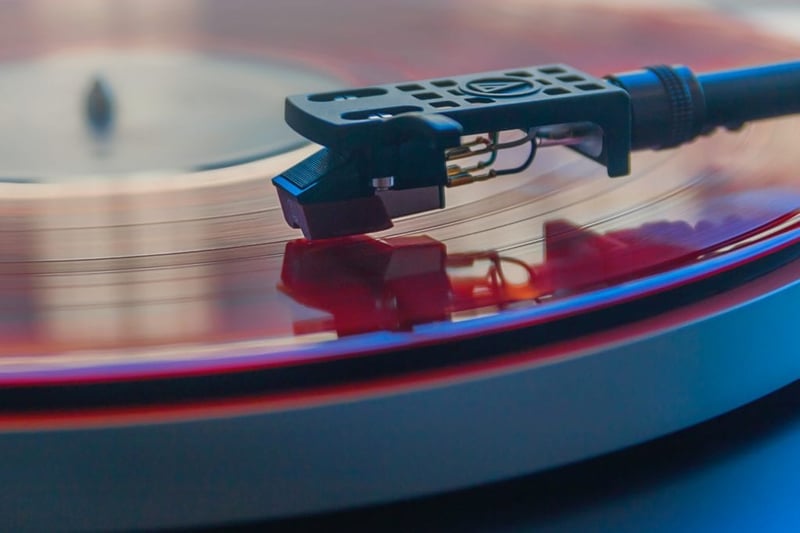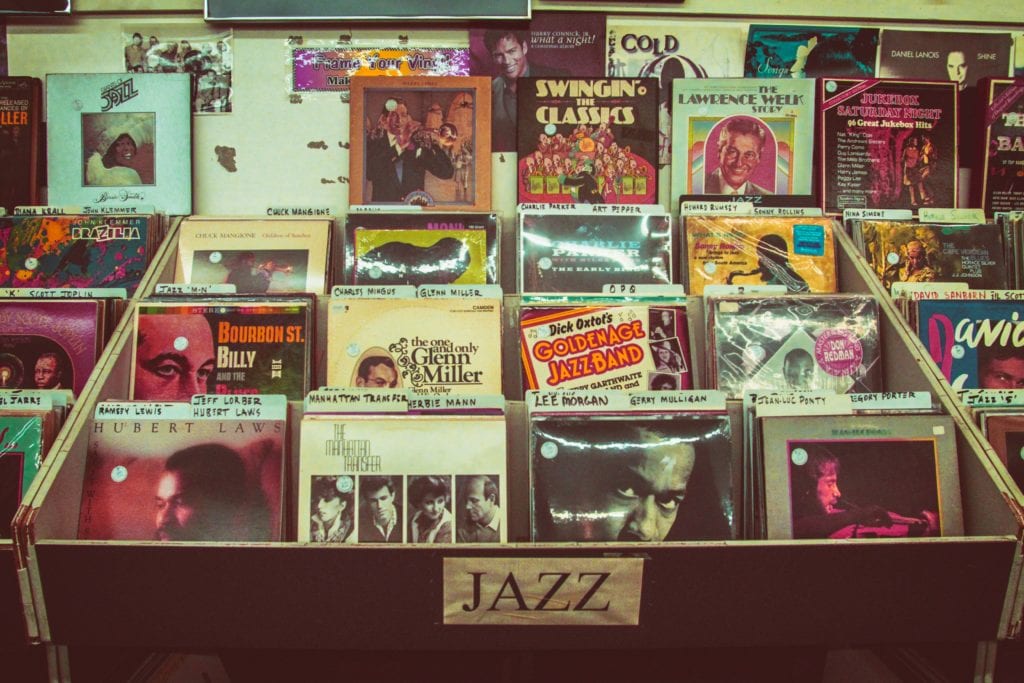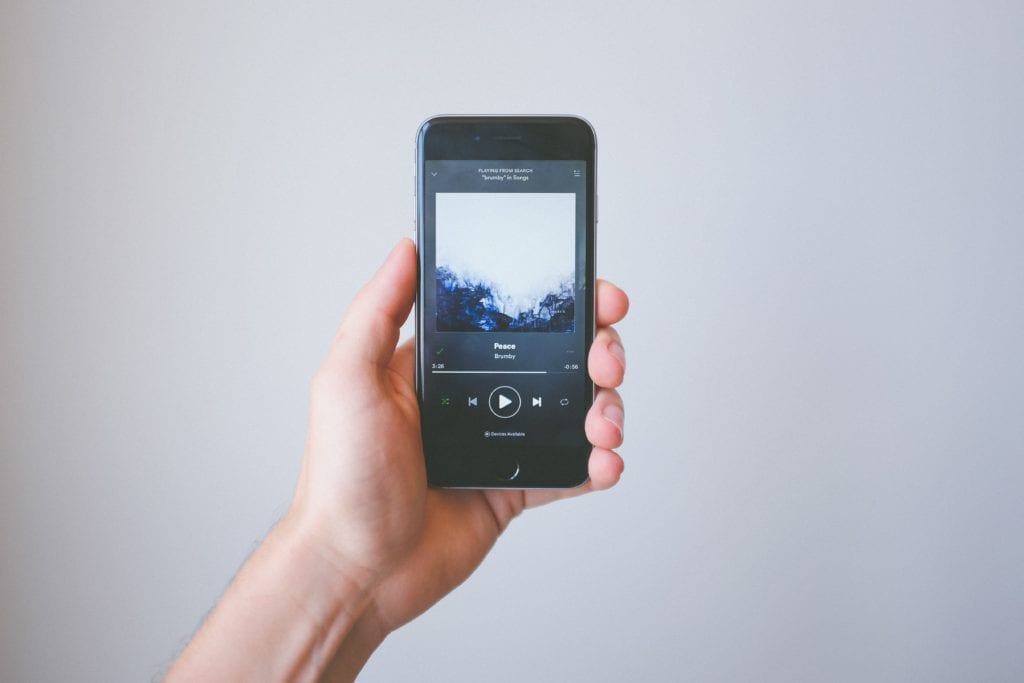Richard Allinson's musical moments: from shellac to streaming — a timeline of music technology

We’re delighted to welcome the brilliant broadcaster Richard Allinson as Stannah’s Entertainment Aficionado. With his passion for music and illustrious radio career, no one is better placed to shine a light on the glittering world of entertainment and its remarkable impact on our lives.
In part two of his ‘Moments that changed music forever’ blogs, to start the series, Richard charts the evolution of listening to recorded music, shares industry insight and speculates the future.
The modern world means we can tune into any song, at any time. It’s no longer a singularly aural experience either; we can re-watch performances from the past too (I re-counted my favourites here).
The options are endless; Spotify, YouTube, TV... and the one I hold dear — radio. Let’s take a look at how technology has transformed how we consume, and enjoy, music.
Tin to turntable — the road to recorded sound
Vinyl is a good place to start. That’s PVC — polyvinyl chloride. The plastic polymer that is your bank card… And most probably your drainpipes. For the first half of the last century, most recorded music was heard on shellac discs. Shellac was by far the most stable medium to hold sound. Others had been tried — the first person to record sound is generally regarded as the Frenchman Edouard-Leon Scott de Martinville who recorded a performance of ‘Au Claire de la Lune’ in 1860. On paper. This excited him greatly, but only because he wanted to look at the images of the soundwaves on the paper. He had no interest in Claire’s situation, which is why he didn’t get around to inventing a device that could actually play back the recording.

Other more intrepid inventors tried recording onto glass, wax, rubber and brass. Thomas Edison’s phonograph recorded onto tin. It sounds hilarious. It wasn’t until the start of the 20th century that shellac discs became the latest thing. Mix shellac with alcohol and you have wood varnish. Leave out the alcohol, press into a disc, spin it 78 times a minute and it was the best medium to store sound. But it wasn’t great; if your gran’s first records were shellac 78s they would have been heavy, brittle and noisy and after maybe four minutes of music she’d have to turn the disc over.
Dr Peter Goldmark was unhappy with this arrangement. He was a Hungarian engineer working for CBS in America. As well as developing colour TV and the system which sent pictures from the Moon to Earth, he spent the best part of eight years creating the vinyl disc. Goldmark’s 12-inch disc rotated at a much more leisurely 33-ish times each minute. Being vinyl, it was more flexible and much quieter than shellac. This flexibility meant a much narrower groove.
Here’s the thing: 12-inch LPs could play for up to 45 minutes — that’s a symphony. In the late 1940s that was a complete radio show. In the ‘50s it was a complete film soundtrack and in the ‘60s it was many more songs from your favourite artists.
Whilst the music industry was thriving, what we had now was a giant leap forward for the record business: the Vinyl LP, the long-player and the album would come to represent the unique genetic code of the record business. Singles were a brief acquaintance with that artist, a cheery ‘hello’. An album was a much more intimate affair — ‘come in, sit down, have a drink, how are you?’ The process went: record an album, release it, promote it with singles, tours, merchandise, and radio and TV and magazine appearances. Money rolled in. Repeat. A model that worked particularly well for the next 50 years.
The record shop — one stop before CDs and cassettes
You may remember your local record shop fondly. I donated many weeks’ worth of pocket money in exchange for LPs like ‘The Dark Side Of The Moon’, ‘Songs In The Key Of Life’, ‘Goodbye Yellow Brick Road’, ‘Dusty In Memphis’ and ‘All Things Must Pass’. Then, I recall the bus journey home — just long enough to read the record label, the lyrics, the liner notes and agree that Roger Dean’s artwork on Yessongs was up there with Storm Thorgerson’s Pink Floyd covers, before finally dropping the vinyl onto the turntable and hoping it wasn’t scratched.

If you didn’t have a record shop in your town, it was maybe the record bar at the back of the chemist. If they didn’t stock it, they could order it for you which would take a week. A week is a lifetime. The only route to playing music was both physically and metaphorically a long one. We did this journey willingly, collecting vinyl records or maybe cassettes.
Once you’d heard your favourite albums played on shiny CDs, you were hooked. But CDs became the thing 35 years ago. Now, you tap your phone. Yes, sales of vinyl records continue to outstrip sales of CDs. We’re also buying more cassettes. However, streaming is how most of us get our music now.
Streaming sees us listening like never before
We’re listening to more music, from more artists, than ever before. As of October 2020, Spotify offered over 50 million songs; in fact, it adds 40,000 new songs every day. How could we not love this?
As I write this in January 2021, Spotify’s subscribers number 130m, while Apple declares 60m and Amazon admits to 55m. Not all services require a subscription. If you can live with limited functions, with ads and without access to every single one of those 50m-and-counting songs, Spotify’s free. The deal’s the same with Pandora, iHeartRadio and whichever other app takes your fancy.

The concept is other-level, and it’s not perfect. Every song ever recorded can be streamed to everyone at one time. Repeatedly. The reality is the song you want to hear now is stored as a high-quality raw file. These files are big; they need processing and compressing to stream them to you without ‘dial-up era’ waiting times. This compression can mean we’re listening in sub-standard quality. Think AM radio compared to FM. Spotify’s regular streaming rate is 160kbps — half the rate of MP3. Their Premium streams are 320. Your 35-year-old CDs are 1411.
Streaming isn’t just the most significant seismic shift in the distribution of music — it’s way bigger than that. It’s affecting both the artists and the charts. So far, the people who make the music (the artists, producers and song writers) have received relatively little income from the streaming of their work. Artists are making more noise over this and it’s getting louder. The singles and albums charts have always been more than a measure of an artist’s success; they remain a recognised criterion for music programming — not just for traditional broadcasters but online programmers, too.
The UK’s number-cruncher the Official Charts values physical sales more highly than a stream — not just in recognition of all those bus journeys to the record shop, but in consideration of the programming algorithms that stream you a song it thinks you might like based on what you’ve requested in the past. But now we’re veering into code writing territory, so let’s look ahead.
The future
I play vinyl records and CDs almost daily, in between streaming. As the shape of the industry continues to change, watch out for the AI composers. Yes, songs composed by Artificial Intelligence. Think of it as the predictive text function, but for song writing.
An exciting new era begins…
Care to Share?
Stay up to date
Latest Blogs

Caregiver burnout guide

A stairlift to match your home interior

Little-known gardening laws that could land you a fine of up to £5,000
How to Choose the Best Stairlift Rail

How long will your stairlift last?

Stannah named a Which? Recommended Provider

Servicing Your Stairlift
What is the weight capacity of a stairlift?
Stairlifts made for you
All our stairlifts whether straight or curved are customised to suit you and your home so call now to arrange a visit to get your FREE personalised quote!